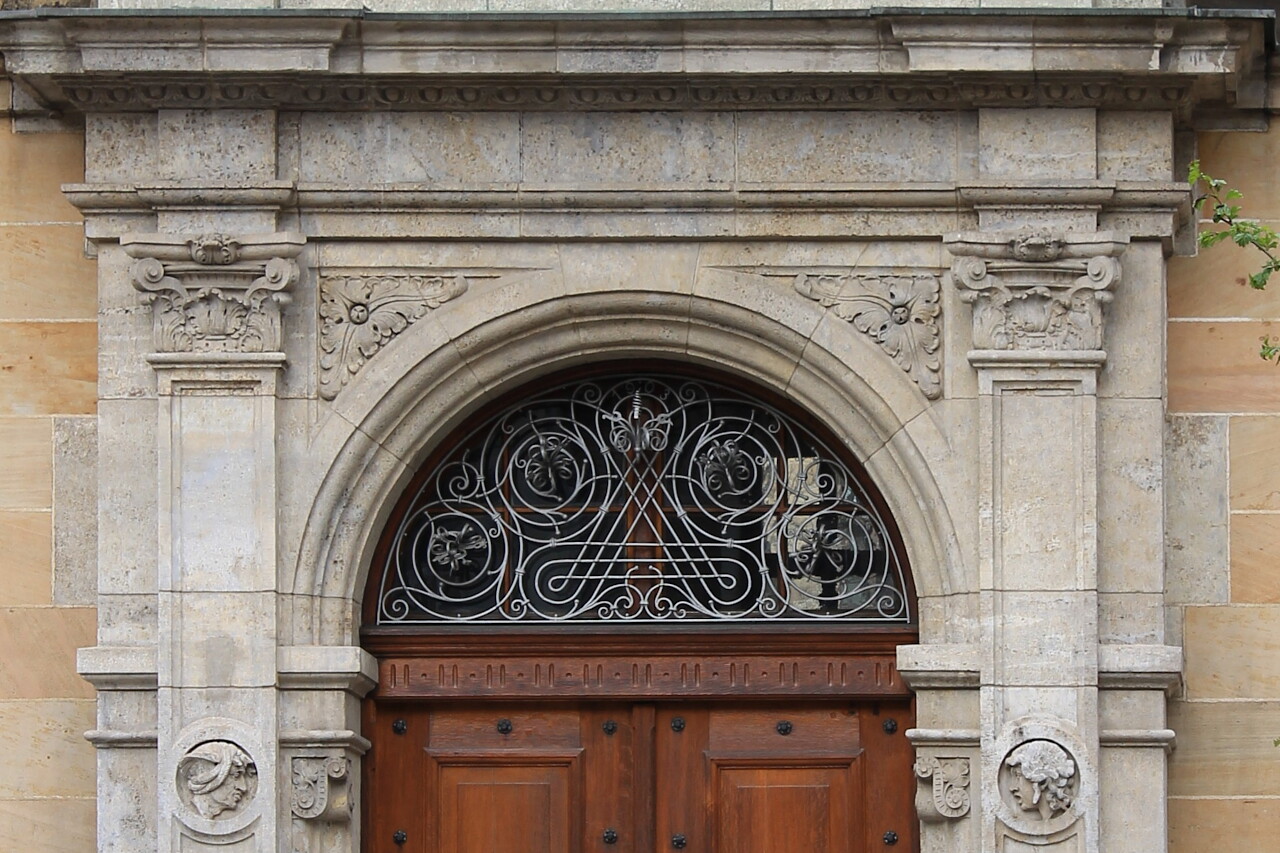Bamberg Oberlandesgericht
On the Wilhelmplatz is the monumental Supreme Court building of Bamberg (Oberlandesgericht). It is one of the three highest judicial bodies in Bavaria, along with the land courts of Munich and Nuremberg (on the map).

It is also home to the Regional Court (Landesgericht) and the Court of First Instance (Amtdgericht), which deals with civil cases and minor criminal offences that do not require a custodial sentence.

The building was built in 1900-1903 and occupies an entire block, in the architecture you can see the typical features of Art Nouveau at that time. The total area of the premises is 62700 square meters. The ground floor has a height of 3.30 m, 1st floor 4.50 m, 2nd floor 4.70 m. The construction cost was one and a half million Reichsmarks. Unfortunately, I couldn't find the name of the architect.

The pediment of the main facade is crowned with a bronze figure of the goddess of justice Themis with scales and a sword in her raised right hand. The image is atypical, as traditionally Themis holds a scale in her right hand, and leans on a sword with her left. In the center of the pediment is the coat of arms of the federal state of Bamberg, flanked by statues of a woman and a man, the latter holding his hands behind his back like a prisoner.

The main portal is decorated with bas-reliefs and two statues that refer to the Roman era - on the left, a man holds a lictor's bundle of twigs (Lat. fasces), an attribute of supreme power, on the right a man with a sword represents punishing force. On the facade, under the windows of the third tier, you can see bas-reliefs with angels and again lictor bundles.

The right corner of the main facade is decorated with a clock tower, its height, together with the spire, is 49.5 meters.

The history of judicial power in Bamberg begins in 1007 with the founding of the Diocese of Bamberg by Emperor Henry and his wife Kunigunde. In 1060, under Bishop Gunther, the emperor granted Bamberg judicial independence.

In 1045, during the capture of Bamberg by American troops, the Courthouse was shelled, but did not receive significant damage. In 1997-2002, major repairs were carried out, while in memory of the war, bullet holes were preserved on the walls.
